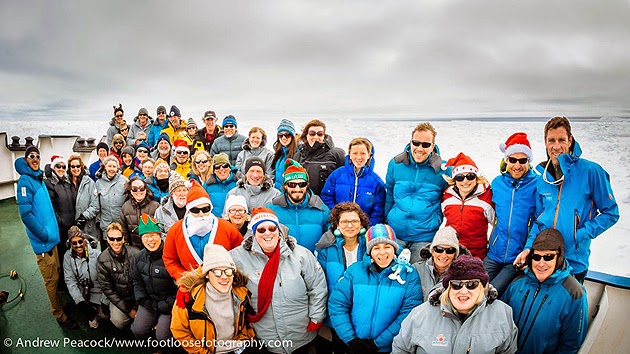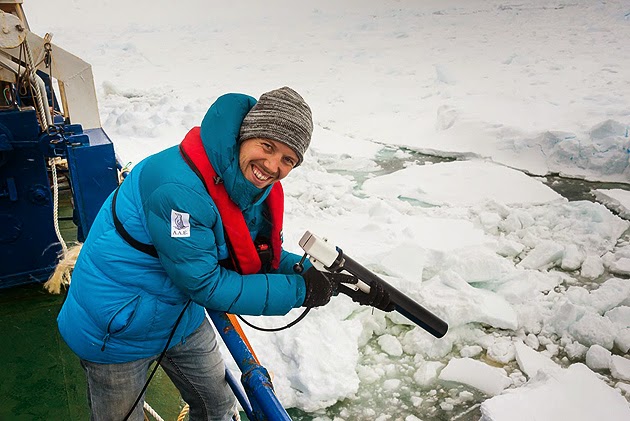The AAE has met heavy ice
Following our successful visit to Cape Denison, sea ice remained clear, allowing our science expedition to proceed to the Mertz Glacier and open water polynya on the other side of Commonwealth Bay. Good conditions allowed the team to reach the Hodgeman Islets to continue our science programme and make comparisons to our findings around Mawson’s Hut. We managed to collect a range of samples for three of the science teams on these rarely visited islands; a fantastic result. The distance from the land to the sea ice edge is only 5 kilometres, providing an excellent test of the impact of the large sea ice extent around Cape Denison. Supported by volunteers on board, our teams investigated marine mammals, ornithology, glaciology while oceanographic work continued on board. Kerry-Jayne Wilson of the Blue Penguin Trust found the penguin colony on the Hodgeman Islets is thriving, demonstrating the distance the Mawson Hut Adelie penguins have to travel is a major factor in the fall of numbers. Tracey Rogers of UNSW also obtained the largest number of seal blubber samples on the expedition while Eleanor Rainsley collected geological samples that will provide an invaluable insight into the history of the East Antarctic Ice Sheet. Returning to the Shokalskiy, conditions started to close in and we quickly loaded the vehicles on to the vessel.
 |
| The team |
 |
| Erik continuing the work |
We have been informed a Chinese ice breaker called Snow Dragon (Xue Long) is currently en route from Freemantle to the Ross Sea and will be entering the pack near our location tomorrow. We have also learnt the French vessel Astrolabe is travelling to our position to provide support and will be arriving shortly after Xue Long; the Australian ship, the Aurora australis, has also been sent from Casey and will be arriving later. For regular updates we will be posting details on Twitter @profchristurney,+Intrepid Science at Google+, and the Guardian Antarctica Live website. The BBC World Service are also embedded in the team and broadcasting a weekly programme on the expedition (including updates on our work) on Discovery. We are using the Inmarsat satellite system to provide live communications while we are in the field.
We will be keeping this blog updated. Thanks to all our supporters and look forward to seeing you all soon.


Comments
Post a Comment